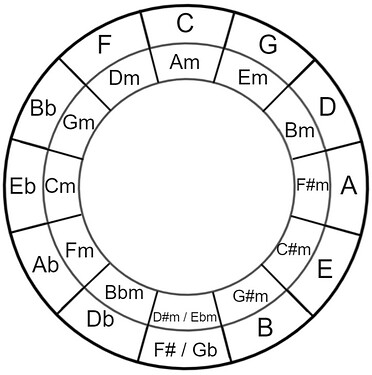The Circle of Fifths Part 8 - where does it go [f] borrowing chords using parallel major & minor keys
Hopefully much useful and plentiful time has been spent exploring and creating diatonic chord progressions in both major keys and minor keys as suggested previously in Part 7.
We have seen major keys. We have seen minor keys – with our focus on the relative minors. We have met and discussed and used the concept of relative major and minor keys in building the inner wheel. Our three examples had, as relative keys; C major and A minor then Ab major and F minor then E major and C# minor.
The entire Circle of Fifths is a quick-glance tool to identify any relative major and minor keys as they are found in corresponding positions on the outer and inner wheels.
